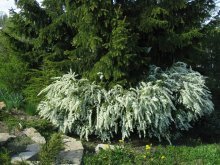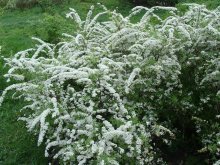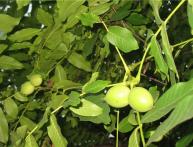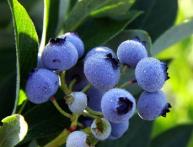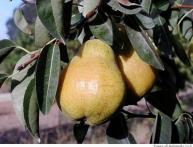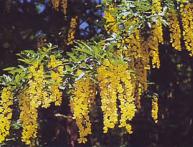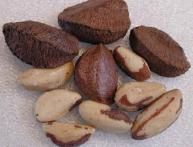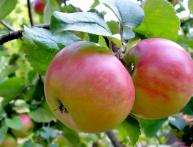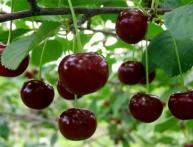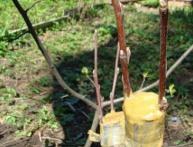Spiraea arguta, general information, advantages and disadvantages, planting and care
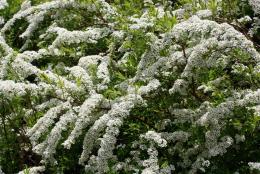
When arranging garden plots and adjacent areas, it is very rare to do without such a shrub as spirea. New species and varieties that have a decorative appearance not only during the flowering period, but also before it begins and after flowering, make bush increasingly popular. Most spireas begin to bloom at the end of June, but Spiraea arguta is a spring-blooming ornamental shrub. With their elegant appearance they transform any corner of the garden or yard.
Content:
- General information about the genus Spiraea
- Spiraea arguta, advantages and disadvantages
- Planting spirea arguta, caring for it
General information about the genus Spiraea
The genus Spiraea belongs to the Rosaceae family and is represented by numerous wild and ornamental deciduous shrubs. The size of some representatives of the genus does not exceed 20 cm, others can reach three meters. All members of the family belong to flowering bushes. Conventionally, types of spirea can be divided into those that bloom in spring and those that bloom in summer. In those spireas that bloom in spring, flower buds are formed on last year's shoots, and in summer spireas, flowers appear on the shoots of the current year. Spring spirea include:
- spirea gray
- Spiraea plumifolia
- Spiraea Wangutta
- Spiraea thunberg
- Spiraea arguta
A common feature of these shrubs is a large number shoots and the ability to produce flowers in early spring on shoots of the second year of life. After 7-10 years, all old shoots on such spirea are completely cut out and the bush grows new young shoots.
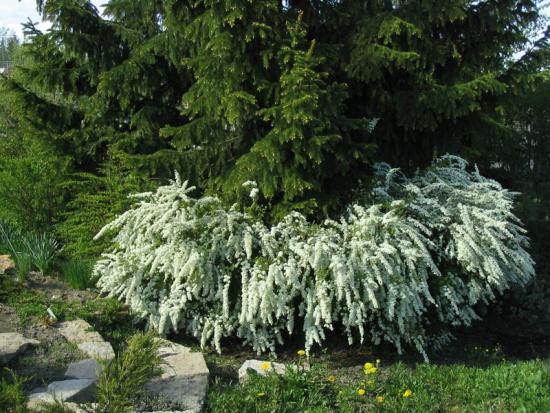
Summer spirea include:
- spirea low
- Spiraea viburnum
- Spiraea pubescent.
- Spiraea Boumalda
- Japanese spirea
- spirea tomentosa
All spirea are extremely unpretentious. They grow in both full shade and full sun. Although in strong shade, flowering may be sparse, and the decorative coloring of foliage in some species sometimes disappears completely. IN landscape In the garden, spirea are indispensable for landscaping large areas and creating hedges. They can withstand fairly heavy pruning very well. Spiraea arguta is especially popular, as it is one of the first to bloom.
Spiraea arguta, advantages and disadvantages
The main advantage of argut spirea is its early flowering; only gray spirea blooms early. Under favorable conditions, the plant becomes covered with flowers in the second half of April. The next advantage of arguta is its lush, spreading crown; without systematic pruning, its shoots exceed two meters in length. The shoots fall in an arched manner to the ground, and during flowering, when they are covered almost all over with white flowers, the branches look like the snow-white arches of a fairy-tale castle.
The flowering is so lush that the small green leaves are not visible because of the flowers. Both from afar and when viewed closely, the flowering branches look like white foam or delicate lush lace. An undoubted advantage is rapid growth and good health in the polluted air of big cities. She winter-hardy and grows without shelter even north of St. Petersburg.Spiraea arguta has another undoubted advantage - it blooms annually and can grow in one place for a long time.
In early spring, Spiraea arguta is used for forcing. Spiraea arguta is an excellent early honey plant. Like most spireas, arguta is hardy and can tolerate unfavorable conditions and drought.
Significant disadvantages of Argut spirea include a rather short flowering period. It averages no more than 20 days; as a rule, in the second half of May it already fades. And although the green shoots with medium-sized narrow leaves do not spoil the overall appearance, they are not highly decorative, such as, for example, spirea with variegated or purple leaves. All spirea, including argut, are resistant to disease. She takes defeat quite well pests:
- aphids
- spider mite
- leafhopper
- Rosaceae miner
When properly treated against these insects, it practically does not lose its decorative properties.
Planting spirea arguta, caring for it
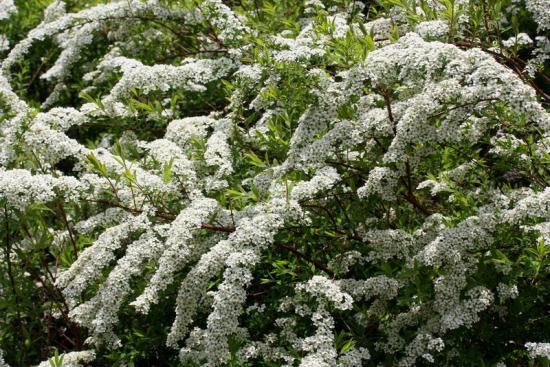
Argut spirea needs a place well lit by the sun, but partial shade is also suitable. If possible, it is better to choose light soils for the shrub, and add sand if necessary. If the soils are poor, then it is advisable to improve them with turf or leaf soil, add humus or compost. This can be done when digging the area. Spiraea is planted mainly in the spring. If the seedlings are in containers, then planting can be done all summer. The planting hole depends on the size of the roots, but it should be on average a quarter larger than the root system, up to 50 cm deep. On average, the distance between plants in group landings can be from a meter to two, in hedges - 0.7-0.8 meters.
The bottom of the planting hole must be covered with a drainage layer of at least 10-15 cm. Broken brick is quite suitable for this. Pour a mixture of fertile soil with peat and sand over the drainage. Install a spirea bush, straighten the roots and cover them with soil so that the root collar remains above ground level. Sprinkle the plantings with water and mulch with peat.
A layer of peat should be poured about seven cm deep. In the future, the young plant requires systematic, but fairly moderate watering. In dry summers this should be done once every three days, in normal weather - once every seven or eight days. The amount of water per watering is 15 liters. After watering, the soil is mulched; if this is not done, it may become crusty. In this case, it needs to be loosened to improve the air supply to the roots.
In addition, under young bushes it is necessary to systematically remove weeds. This will protect fragile bushes from diseases and pests. An adult plant will need sanitary pruning and anti-aging pruning. Sanitary pruning is best done in the spring. In Argut spirea, frozen or dried tips of shoots are removed. Small and weak shoots need to be cut out. For older bushes, drastic pruning is carried out, all shoots are cut out completely, the bush begins from the root with new young shoots.
After such pruning, the plant needs feed organic and complex mineral fertilizers. The best way to propagate arguta is to root cuttings in the first half of June. For cuttings, young straight shoots, cut into segments containing six buds, are suitable. When using epin, they take root quite well in a greenhouse or greenhouse with loose soil.Otherwise, caring for them is the same as for young bushes.
Video about the spirea plant:
Interesting information about the vegetable garden

